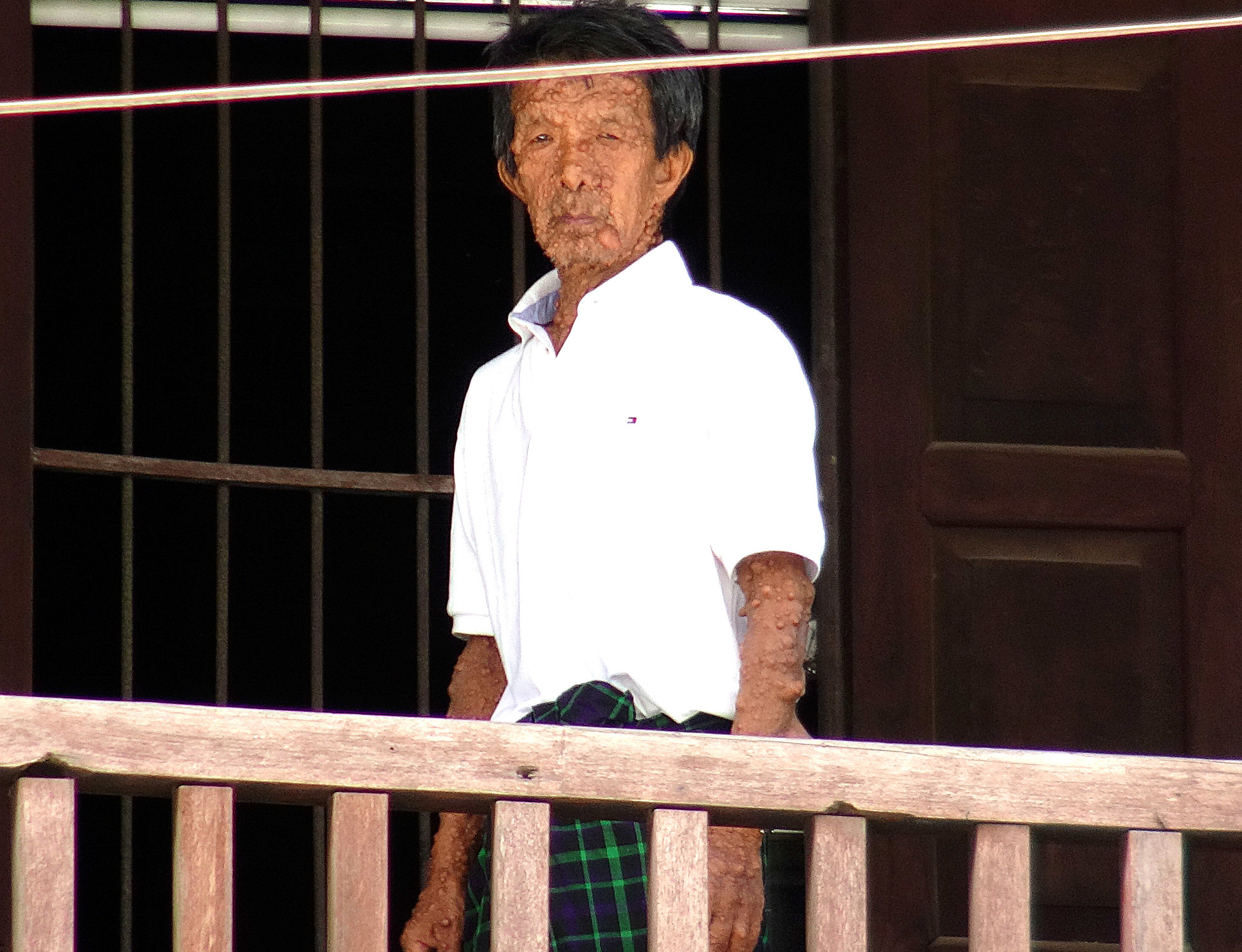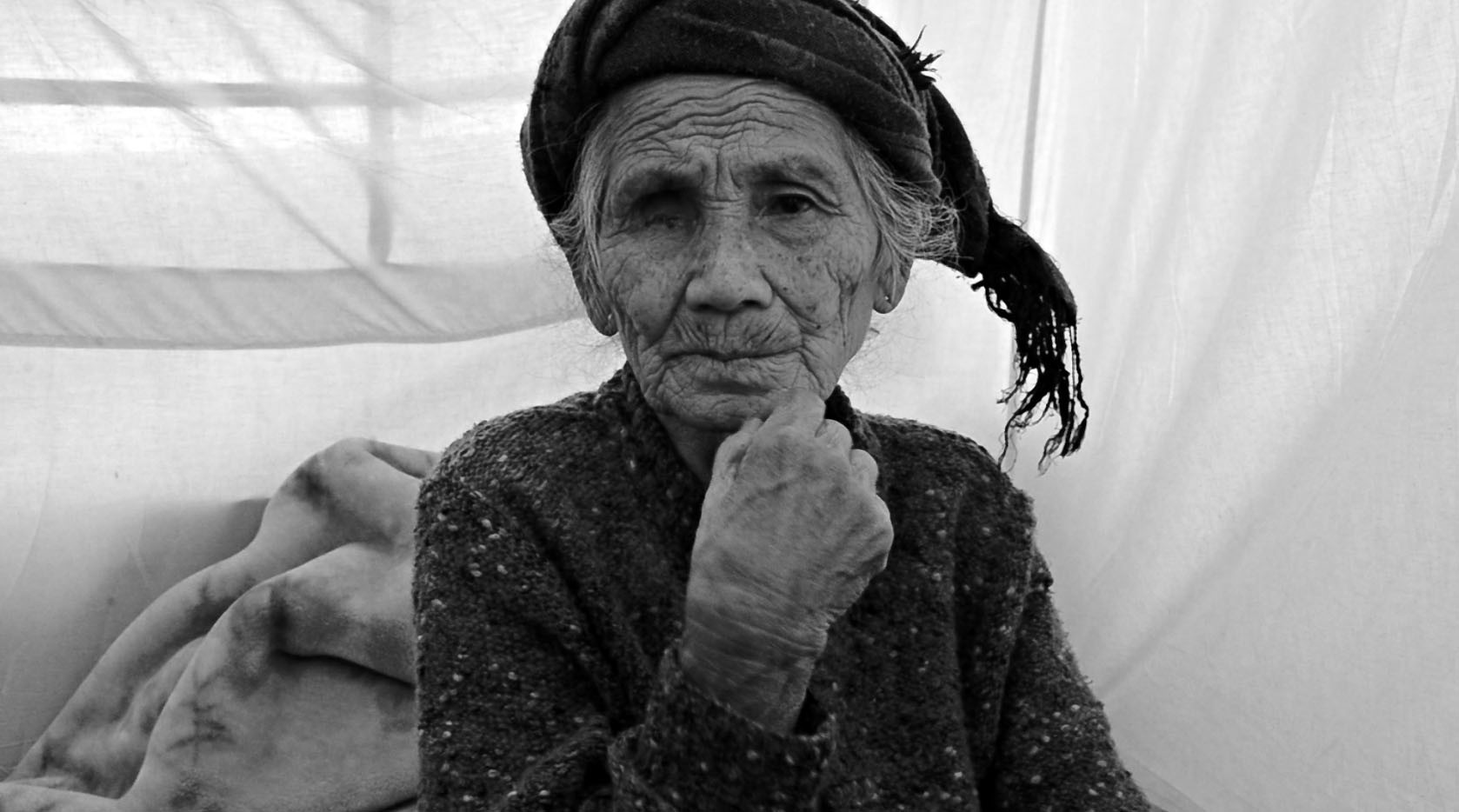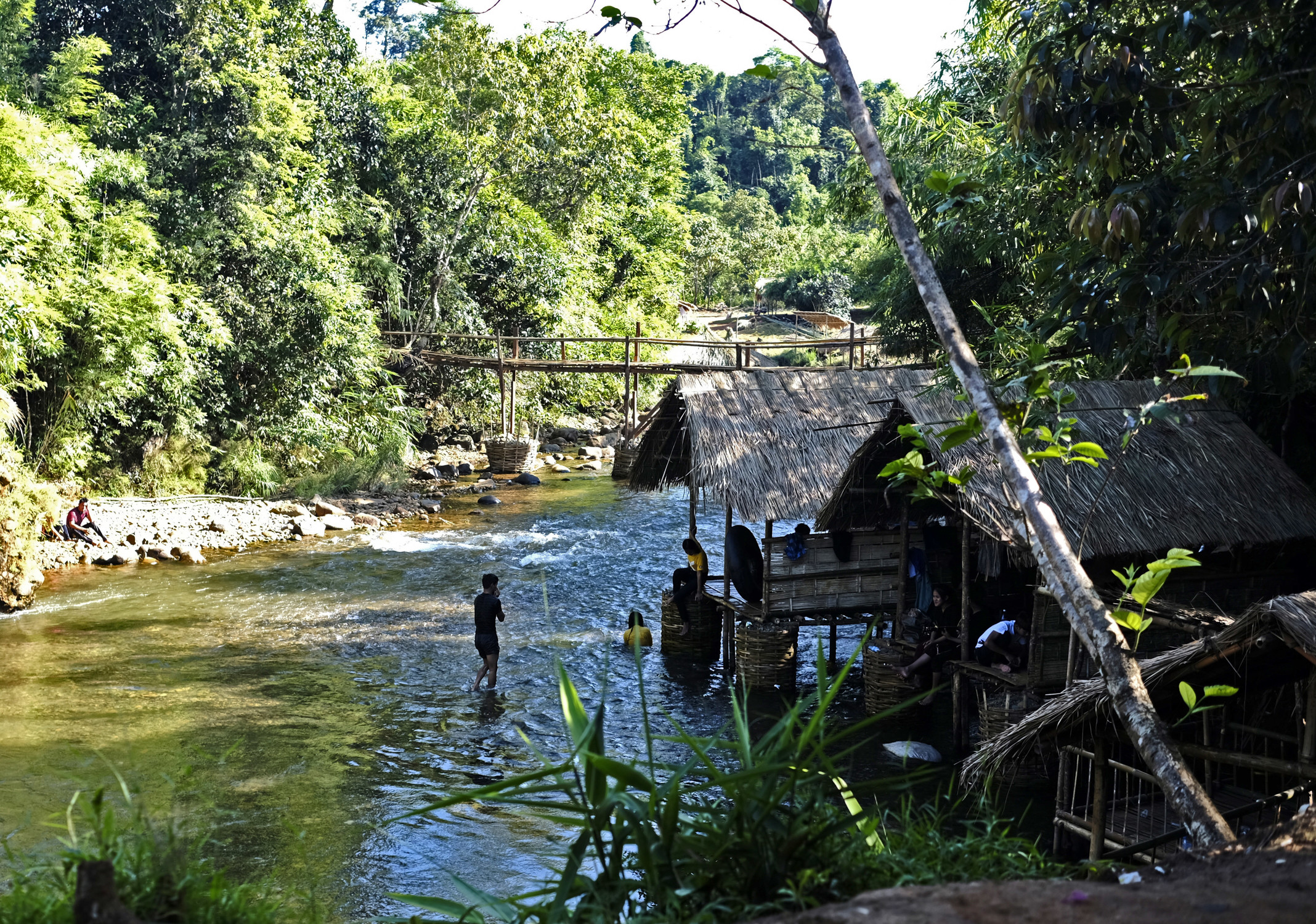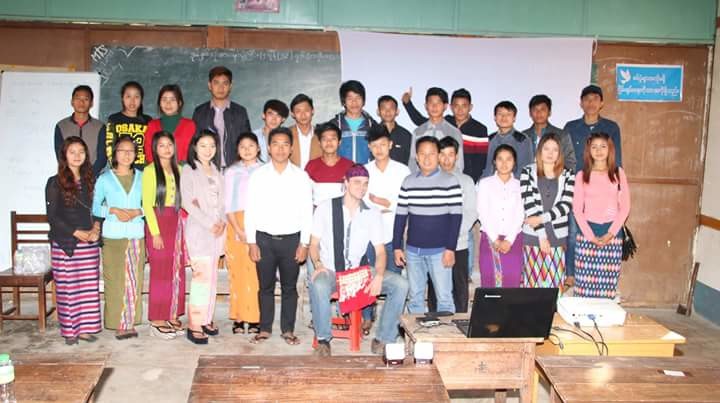By Sam Cooley
MYITKYINA, MYANMAR—Scrambling past crippled dogs is a legless beggar approaching a table of people dining at a restaurant. Hands outstretched, with cataract-filled eyes, he looks up as he’s handed a dirty 50 kyat note, the equivalent of about a nickel.
It’s lunch hour in this city of a few hundred thousand in Kachin state, in the far north of Myanmar.
Across the street is a woman, a leper, waiting in line for shampoo at a general store filled with products brought over the border from neighbouring Yunnan province, China. Her face and limbs are so disfigured from advanced stages of the disease that she would be unrecognizable to anyone who knew her before she caught it.

Shortly after leaving the restaurant by way of motorbike, I see a boy no older than 12, bristling at the lone Caucasian. At first it looks as if he is holding a toy, but no toy takes a 7.62 cartridge. In reality, he’s standing on the edge of a property and he’s brandishing a Chinese assault rifle and looking tough.
This is Myanmar. The reality for the locals here is both better and worse than what’s described on Western TV. The country in recent months has grabbed headlines. Much has been discussed about atrocities occurring in Rakhine state and the mass migration of people to neighbouring Bangladesh to seek refuge from conflict.
But unbeknownst to many in Canada, other parts of Myanmar are also facing steep long-standing challenges that deserve the Canadian government’s attention.
For generations, people have been dying of illnesses such as diarrhea, dysentery, and dengue while stuck living in overcrowded camps for internally displaced people (IDPs). It’s a common occurrence on the edges of all of Myanmar’s borders (the country has five), when ethnic tensions increase or are stoked for foreign and domestic reasons.
At the same time of all this suffering, Myitkyina’s movie theatre is packed with people of various ethnic origins. All of them are watching a Thai drama in relative peace: some are Kachin Baptists, others Buddhist Bamar or Sagaing Muslim. They’re eating popcorn, smoking cigarettes or Burmese cheroots, browsing Facebook, and chewing betel nuts.
With all that’s written in Western headlines, it’s hard to get a grip on the reality for most people who live in urban Myanmar. Christians, Buddhists, and Muslims can often be seen living in peace, drinking tea, and doing business with one another in markets from Myitkyina to Yangon, the country’s largest city.
Many people are passionate about politics, but unless they’re radical rebels living in the boonies, most urban people—Muslims included—will vocally support Aung San Suu Kyi, the supposedly internationally disgraced leader of democratic Burma (another name for the country).
Democracy and development is slow moving in chaotic Myanmar, a country with more than 135 distinct minorities.
For the international community, including Canada’s recently deployed special envoy to Myanmar, former interim Liberal leader Bob Rae, immediate humanitarian and emergency care should be the primary focus for now. But in the future there are many areas of the country that Canada could engage with.
Soon it’ll be getting cold in Kachin state, at least for the locals. In a few weeks, you’ll be able to see your breath at night or in the early mornings in Myitkyina. For a Canadian, the temperature isn’t a problem.
But roughly 150 kilometres north of this city is a valley marked by what will soon be a few snow-capped Himalayan foothills. For the more than 100,000 IDPs dwelling in ill-equipped, overcrowded camps in Kachin state, the impending winter is likely to cause several deaths, as it did early this year while I was visiting these areas.
One of the most striking interviews I did was with a blind, one-eyed 87-year-old Kachin woman who was living on a tent floor with her remaining relatives.

Through tears, she gripped my hand and spoke through an interpreter.
“I don’t know whether I’ve had a good life or a happy life; I mostly lived in the forest,” said Kaw Um Loo.
She died several months ago, but for a Myanmar IDP she had had a long life.
Such is life for many of the Kachin people who live in the hills and valleys of northern Myanmar. The ethnic group is a relatively well organized clan of predominantly Christian tribes of Sino-Tibetan origin. For many years, they have had an almost inseparable connection, through their Christian faith, to the West.
With a population estimated of about one million, the Kachin are indigenous to this region, situated in the porous border areas in northern Myanmar, China, and India. Collectively, this clan has—more or less—been at odds with Myanmar’s central government on and off for almost a century.
Like many other ethnic groups, Kachins struggle to have their rights recognized in the vastly underdeveloped country. They also have their own armed forces, and recent clashes with the central government have resulted in thousands of people fleeing their homes, often destined to be marooned in IDP camps, possibly for not only their lives, but the lives of their grandchildren as well.
There is no definite way to fi x this problem, but well-established faith-based groups appear to be the best organizations to deliver what little resources exist to keep people alive and educated.

(Internally displaced children in camps in Kachin state / SAM COOLEY)
The ‘wealth curse’
Statistics tell a very different story about Myanmar. At least on paper, it’s among the fastest growing economies in the world, with about seven per cent GDP growth in the past year, according to recent figures cited by Nasdaq.
But trends on paper or in speculators’ spreadsheets are often very separate from reality, especially in Myanmar. So perhaps it isn’t surprising that, since 2010, billions of dollars of foreign aid has been funnelled into Myanmar from the West, purportedly for a number of good-spirited reasons, including to help in the peace process.

Yet, the IDP camps remain, not only in Kachin state, but also on the Thai-Myanmar border, where the UN refugee agency estimates there are an additional 230,000 IDPs, most of whom are ethnic Karen.
Times are changing, the economy is advancing, but despite being part of Myanmar, Kachin state and many other areas are sadly (and potentially deliberately) very isolated from the rest of the country.
For the far northern regions of the country, the actual result is that most business takes place directly with China through neighbouring Yunnan.
One only needs to make the 23-hour commute from Yangon to recognize Myanmar doesn’t actually have a real road to access its northernmost state. At the best of times, the cross-country highway from Mandalay northwards is a dirt path peppered with cows, potholes, and lots of mud. The fact it can be traversed by bus at all is only a testament to the diligence and grit of private Myanmar bus companies.
Though it’s wedged between two of the world’s largest economies, China and India, Kachin State remains isolated from the centre of the country despite its strategic location. The hills are filled with rare minerals worth billions, yet the people remain poor. “We call it the wealth curse,” says an old Kachin priest, sighing while hoisting a flashlight during a power outage when the subject turns to his homeland’s valuable resources.

(A 20 kilogram piece of rare jadeite, author collection)
There are a lot of geopolitical reasons for the lack of development in this area, but one of the most simple and tangible things to address in Kachin state—and indeed in many places in Myanmar—is the lack of a proper paved highway so modern commerce can reliably be conducted, as it is to an extent between Mandalay and Yangon.
With few jobs, it’s no wonder that Kachin state faces a drug and alcohol overdose epidemic, especially when a plentiful supply of pure $1 “No.4” heroin is flooding the region. Many young women in these areas appear to be far more equipped, for whatever reason, to combat the temptation of drug abuse, and are much more motivated to build families.
Perhaps this is among the reasons why Canada spends so much money on women’s empowerment in Myanmar. Canadian aid appears well placed, at least in theory.
For the present generation of adolescents and young men, it sometimes seems in their best interests to join the ranks of armed groups, paramilitary or otherwise.
There aren’t many other options to look forward to. This is where construction projects and vocational trades training among savvy investors could become fruitful in the future for both parties. Canada should follow Japan’s lead and start putting some of its foreign development funding towards accurate, measurable, and tangible large-scale infrastructure projects in Myanmar.
Not only would road projects offer jobs, but they would literally pave the way for future economic activity and resource exploitation.

What’s next for people in conflict?
Canada’s federal government is scrambling to address the troubles in Myanmar, and sources suggest Bob Rae is expected to produce a report on the country in the new year.
The situation in Rakhine state is one of many ongoing conflicts in Myanmar. Perhaps the world is still having trouble believing or is content to remain ignorant of the fact warfare has raged on the untamed borders of Burma for a very long time.
If refugee flows into Canada from Myanmar are to exist, they should be highly controlled in conjunction with Burmese central authorities, and Ottawa should be cognizant of the fact there are many tribes and creeds who likewise suffer as a result of internal conflict.
Rakhine is merely the most recent and largest-scale internal and bloody battle to take up the headlines. Certainly, it is not the only one happening now in this highly misunderstood and beautiful country.

The Liberal government has already committed more than $50-million to a number of aid projects in Myanmar.
As a foreign observer spending months at a time in Burma, it appears more money and perhaps pursuing an even-handed approach towards adopting small populations of refugees of all ethnicities and creeds could benefit the many souls who suffer in Myanmar.
Federal collaboration with faith groups in Canada—whether they’re Buddhist, Christian, or Muslim—are among the best methods of sponsorship and integration for many people in Myanmar’s traditional society.
Assimilation into Canadian culture is highly possible for these hardy people, many of whom can learn English quickly, especially if they’re already familiar with Latin script, and many are already used to living in rural areas under extreme hardship.
Sam Cooley is a writer and marketer who has worked as a volunteer in northern Myanmar as an English trainer and advertising lecturer.

("Saya Sam" teaching at Myitkyina Catholic Diocese in 2017)
The Hill Times